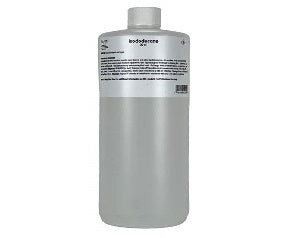
Isododecane Benefits
Isododecane is a versatile ingredient that has gained popularity in the beauty and skincare industry for its unique properties. As a colorless, odorless liquid, isododecane serves multiple functions in cosmetics and personal care products, from enhancing application to improving texture. In this article, we’ll explore the benefits, uses and safety considerations of isododecane, shedding light on why it’s a staple in many formulations.
What Is Isododecane?
Isododecane is a type of hydrocarbon known as an isoparaffin. It is derived from petroleum and is primarily utilized in cosmetics for its emollient and solvent properties. Its lightweight nature allows it to spread easily on the skin, making it a favored ingredient in various beauty products.
Benefits of Isododecane
1. Excellent Emollient
Isododecane acts as an emollient, helping to soften and smooth the skin. This property makes it ideal for products like moisturizers and serums, where a smooth application is essential.
2. Long-Lasting Effects
Due to its ability to form a barrier on the skin, isododecane helps lock in moisture and prolongs the wear of makeup. This is particularly beneficial in long-wear cosmetics, ensuring that foundations, lipsticks and eye products last throughout the day without fading.
3. Non-Greasy Finish
Unlike heavier oils, isododecane provides a lightweight feel, allowing products to glide on the skin without leaving a greasy residue. This makes it suitable for various skin types, including oily and combination skin.
4. Reduced Color Transfer
Isododecane helps minimize color transfer from cosmetics, such as lipstick to cups or skin. This is especially valuable in long-wear formulations, where maintaining the integrity of color is crucial.
5. Quick-Drying Formula
In makeup products, isododecane aids in quick drying, allowing users to apply multiple layers without waiting for each to set. This is particularly advantageous in products like nail polish and hair sprays.
Uses of Isododecane in Beauty Products
Isododecane is found in a variety of beauty and personal care products, including:
- Foundations and Concealers: For a smooth application and long-lasting coverage.
- Lip Products: In long-wear lipsticks to prevent color transfer and enhance wear time.
- Mascara and Eyeliner: To improve application and ensure products stay intact throughout the day.
- Hair Serums and Sprays: For a lightweight finish that provides hold without weighing hair down.
- Moisturizers: To enhance texture and improve spreadability.
Safety Profile of Isododecane
Isododecane is generally considered safe for use in cosmetic products. The Cosmetic Ingredient Review Expert Panel has reviewed relevant studies and deemed it safe when used in low concentrations, which is typical in beauty formulations. However, as with any ingredient, there’s a possibility of allergic reactions or sensitivities.
Potential Side Effects
While serious side effects are rare, some individuals may experience:
- Contact Dermatitis: A skin reaction that can occur from irritation or allergies, presenting as redness, rash, or itching.
- Allergic Reactions: Though uncommon, individuals with sensitive skin may react to isododecane. A patch test is recommended for those who are uncertain about their skin's sensitivity to this ingredient.
Conclusion
Isododecane is an invaluable ingredient in the beauty industry, offering numerous benefits such as improved application, extended wear and a lightweight feel. Its versatility makes it suitable for a wide range of products, from makeup to skincare. While it is generally safe for most users, individuals with sensitive skin should proceed with caution and consult a dermatologist if they experience any adverse reactions.
By understanding the properties and benefits of isododecane, consumers can make informed choices about the products they use, enhancing their beauty routines while ensuring skin safety.
Sources:
1. Cosmetic Ingredient Review - Isododecane Safety Assessment Link
2. Environmental Working Group - Isododecane Ingredient Profile Link
3. National Eczema Association - Understanding Contact Dermatitis Link